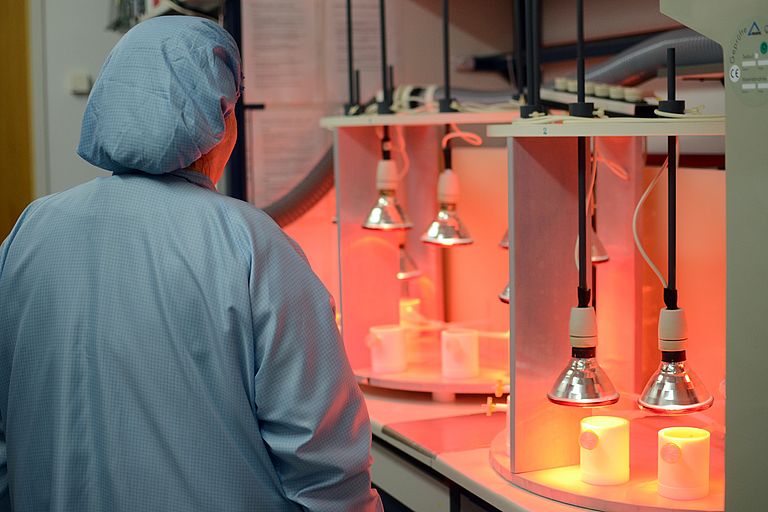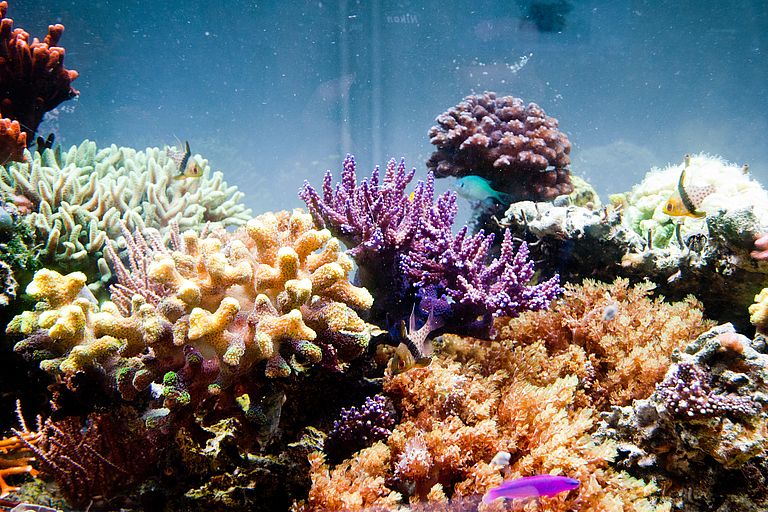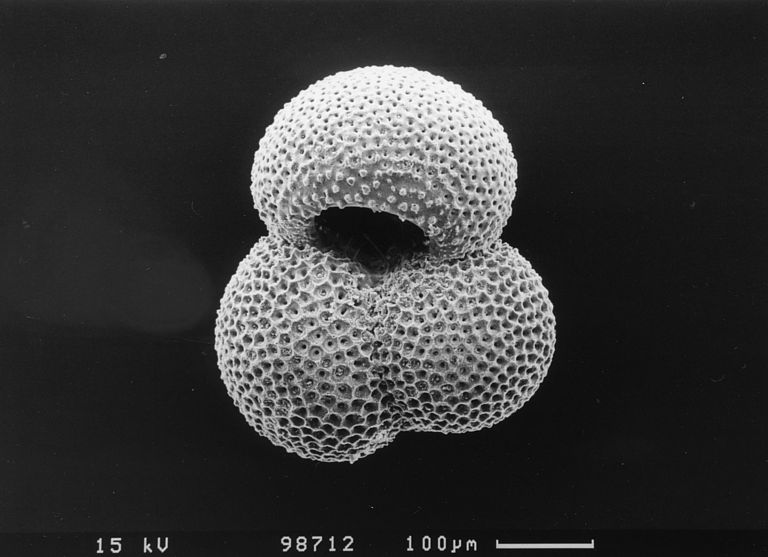How the sea level influences the global carbon cycle
Isotope measurements in Kiel provide new insights into carbonate deposits on the sea floor
Carbon is a true transformation artist among the elements. Together with calcium, it precipitates as calcium carbonate, for example, of which corals built up their skeletons or calcareous algae form their shells. In combination with oxygen, carbon performs a phase shift from a solid crystal to the greenhouse gas carbon dioxide, and in combination with hydrogen it forms the even more effective greenhouse gas methane. In this sense carbon is the most important player and indicator of climate and climate history. The more carbon is bound in biological form, in the marine sediments or in the solid underground, the cooler the Earth was - and vice versa. Understanding the carbon cycle in all its details is therefore fundamental to a better understanding of the Earth's climate system.
Scientists from the University of California Santa Cruz (USA) and GEOMAR Helmholtz Centre for Ocean Research Kiel report today in the renowned journal Science on new insights into the global carbon cycle of the past 35 million years. In particular, they focus on processes that remove carbon from the environment through the deposition of carbonates. “We were thus not only able to trace the link between the carbon cycle and climate changes, but also to prove the influence of sea level fluctuations on the carbon cycle”, explains Prof. Dr. Anton Eisenhauer from GEOMAR, co-author of the study.
The study is based on analytically complex measurements of isotopes of the element strontium in of a special mineral barite sampled from marine sediments. “Strontium is the chemical sister of calcium and is therefore also incorporated into marine calcium carbonate shells”, explains lead author Prof. Dr. Adina Paytan from the University of California - Santa Cruz. Conclusions can thus be drawn about the formation of calcium carbonate in the sea via their strontium isotope composition. The novel method for the precise measurement of so-called “stable strontium isotopes” had previously been developed at GEOMAR in Kiel and recognized that the stable strontium isotopes are a perfect indicator for the past carbon cycle.
The international team found that the stable strontium isotope ratios in the ocean were subject to large fluctuations, which are related to the changes in the carbon cycle over the last 35 million years. Sea level also plays a decisive role in this. This was shown by comparing carbonate deposits near the coast and in the deep ocean.
Carbonate deposition in the open ocean is mainly caused by calcium-shell-forming protozoa such as foraminifera or coccolithophores, which form their shells from the calcium mineral calcite. In the shallower waters of the continental shelves, however, stony corals dominate, building their skeletons from the calcium mineral aragonite.
Although calcite and aragonite have many properties in common, they differ greatly in their formation environment and in their chemical composition. This is especially true with regard to the incorporation of the element strontium. When the aragonitic corals form, they remove much more strontium from the seawater than the unicellular calcitic foraminifera do. However, corals also release strontium back into the seawater when the ocean shelves become dry land due to climate fluctuations and weathering processes erode them.
“Thanks to the new analyses, we understand more precisely the processes that take place when carbon is removed from the environment and deposited in the sea. This has also allowed us to show that sea level fluctuations are not only a consequence of, but also a cause of climate and atmospheric CO2 variations”, says Professor Eisenhauer. A point which is also of special interest for oil exploration.
“These results open a new window in which we can see how the global carbon cycle has adapted to sea level and climate change over geological time. These findings may help to better guide our response to current climate change and mitigate the worst effects of ocean acidification”, adds Professor Klaus Wallmann from GEOMAR and also co-author of the study.
Reference:
Paytan, A., E. M. Griffith, A. Eisenhauer, M. Hain, K. Wallmann, and A. Ridgewell (2021): A 35-million-year record of seawater stable Sr-isotopes reveals a fluctuating global carbon cycle. Science, 371, 1346-1350, doi: 10.1126/science.aaz9266
Please note:
This work was supported by the National Science Foundation, the German Research Foundation, the Helmholtz Association, and GEOMAR.
Video explaining the connection between Strontium and sea level changes



YouTube Video about Strontium Changes in the Ocean (Courtesy of UCSC).


